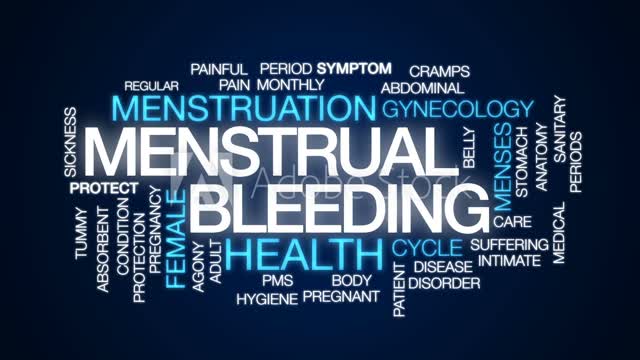Premium Only Content

Menstrual disorders and quality of life of women in an urban
Karthik Balajee Laksham,1 Ramya Selvaraj,1 and Sitanshu Sekhar Kar2
Author information Copyright and License information Disclaimer
Background:
Menstrual disorders are common among women in the reproductive age group and affect their normal functioning and social life. Due to cultural reasons, menstrual problems often get unreported. In India, the literature on the effect of menstrual disorders on the quality of life (QOL) of women is limited.
Objectives:
To estimate the prevalence of menorrhagia and dysmenorrhea among women in an urban field practice area and to compare their QOL with women without menstrual disorders.
Methods:
This is a community-based cross-sectional study among women who have attained menarche and have not yet attained menopause in an urban field practice area of a tertiary care teaching institute in Puducherry. Households were selected by systematic random sampling, and a door-to-door survey was done using an Android-based mobile phone app Epi Info. A pretested questionnaire was used for the collection of sociodemographic details. QOL was measured using World Health Organization BREF scale.
Results:
A total of 119 women were interviewed, and their mean (standard deviation) age was 33 (10) years. The majority were homemakers (63%), belonging to lower socioeconomic status (60%) and one-fifth had no formal education. The prevalence of dysmenorrhea was 45% [95% confidence interval (CI): 36.6%–54.4%] and that of menorrhagia was 17% (95% CI: 11.6%–25.3%). QOL in women with dysmenorrhea was poor compared with normal women in physical, psychological, social, and environmental domains (mean score 57.9 vs. 69.7, P < 0.001).
Conclusions:
The prevalence of dysmenorrhea and menorrhagia is comparatively high in this study area. QoL of women with these disorders was poor.
Keywords: Dysmenorrhea, menorrhagia, quality of life, World Health Organization BREF
Go to:
Introduction
Menstrual disorders such as dysmenorrhea, menorrhagia, and irregular cycles are common among women in the reproductive age group and they are responsible for physical, behavioural, and emotional changes around the time of menstruation. These disorders affect the normal functioning and social life of women and limit their daily activities. They are also an important cause of college/school absenteeism among adolescents.[1]
The quality of life (QOL) of women with these disorders is compromised. The World Health Organization (WHO) defines QOL as “the individuals’ perception of their position in life in the context of the culture and value systems in which they live and in relation to their goals, expectations, standards, and concerns.”[2] The Global Burden of Diseases study has also not estimated the disability-adjusted life-years for menstrual disorders.[3] In India, due to cultural reasons menstrual problems often get unreported.
The literature on the effect of menstrual disorders on the QOL of women is limited. Community-based studies on menstrual disorders will help in estimating the burden of these disorders and in emphasizing the need to develop guidelines for their management at the primary care level. We conducted this study to estimate the prevalence of dysmenorrhea and menorrhagia in the urban field practice area of a tertiary care teaching institute and to compare the health-related QOL of individuals with and without menstrual disorders, and to study the treatment-seeking behaviour for menstrual complaints of the study population.
About us https://bit.ly/3GUPFOa
Contact us +919942258153 kvk.subadhra@gmail.com
https://50fc042hxgwajw39br8gnkxk-z.hop.clickbank.net
-
 1:58:44
1:58:44
The Quartering
5 hours agoTrump To Charge USAID Staff, Campus RIOT Erupts, Theo Von & Candace Owens, Ukraine Gets Worse!
68.7K38 -
 1:08:42
1:08:42
Winston Marshall
5 hours ago“This Is a Ticking Timebomb!” Trump’s Unlikely Coalition & The Woke Right w/James Lindsay
20.8K5 -
 24:32
24:32
Rethinking the Dollar
5 hours agoWhy Washington Will NEVER Fix the Debt Crisis w/ Paul Stone
8.43K1 -
 4:40:22
4:40:22
Viss
6 hours ago🔴LIVE - PUBG New Extraction Shooter Coming Soon? - PUBG
28.7K2 -
 51:11
51:11
PMG
20 hours ago $0.22 earnedHannah Faulkner and Chloe Castillo | Is your music IMPACTING you?!
8.04K -
 1:07:36
1:07:36
Russell Brand
7 hours agoTariff War Begins: Trudeau Threatens Retaliation Against Trump – SF549
117K90 -
 1:51:07
1:51:07
vivafrei
6 hours agoGuest "Misfit Patriot" on Andrew Tate & Casey Anthony! Canada Goes Full Trade War! ACB = DEI?
79.3K33 -
 1:58:22
1:58:22
The Charlie Kirk Show
5 hours agoCharlie vs. Gavin Newsom | Jonathan "Lomez" Keeperman | 3.6.25
128K75 -
 1:15:59
1:15:59
Simply Bitcoin
5 hours ago $2.90 earnedCould The NEXT 24 Hours Change The 2025 Bitcoin Bull Market? | EP 1197
38.5K3 -
 49:57
49:57
The Dan Bongino Show
8 hours agoAnother Phony Narrative Crumbles + First Show In The New Studio! (Ep. 2437) - 03/06/2025
862K2.41K